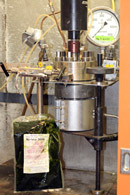The National Solid Wastes Management Association's local chapter commented that reducing the rate cap will not have the desired effect.
Over the next two years, EPA will provide $100,000 to help the city develop projects in Health Zone 1.
The Department of Justice said the charges include environmental crimes, obstruction, false statements, and conspiracy related to pollution control records.

From the first Earth Day to the awarding of the Nobel Peace Prize to Al Gore, Stantec professionals outline the movement's progress.

Marine patrols and enforcement can be up to 70 times more cost effective than building artificial reefs or trying to rehabilitate natural ones in Southeast Asia, according to the study.
EPA, DOE, and the Center for Resource Solutions are sponsoring competitive awards that recognize commitment and achievements in green power.
The Ministry of Education and Research has opened its Green Talents competition; deadline for application is June 20.

Disposing of outdated IT not only helps mitigate environmental risks but also delivers energy cost and productivity benefits.
The researchers compared energy use of a conventionally managed corn and soybean system with two low-input systems that used more diverse crops and manure applications.
The Texas Commission on Environmental Quality has $12 million in grants available; the deadline for application is June 30.

Research by National Science Foundation award winner Peter Sunderland may help engine designers improve the way fuel is injected and burned.
Agency cites increases in anthropogenic greenhouse gas emissions, rising average temperatures, and intense tropical cyclone activity.
By combining conducting and nonconducting domains in the membrane’s nanostructured assembly, researchers improved conductivity performance.
Participants can create their own agenda using a wiki page.
EPA hosts first national building competition to improve energy efficiency
1st Pricing has developed a technology for architects and other designers who use CAD programs.
The U.S. Green Building Council recognizes that there's more than one way to win the gold.

The $2-million American Recovery and Reinvestment Act-funded research combines hydrothermal, catalytic, and biological approaches to make biofuel.

Think of the monitoring possibilities: cathodic integrity for corrosion, pump station efficiency, and tank status.